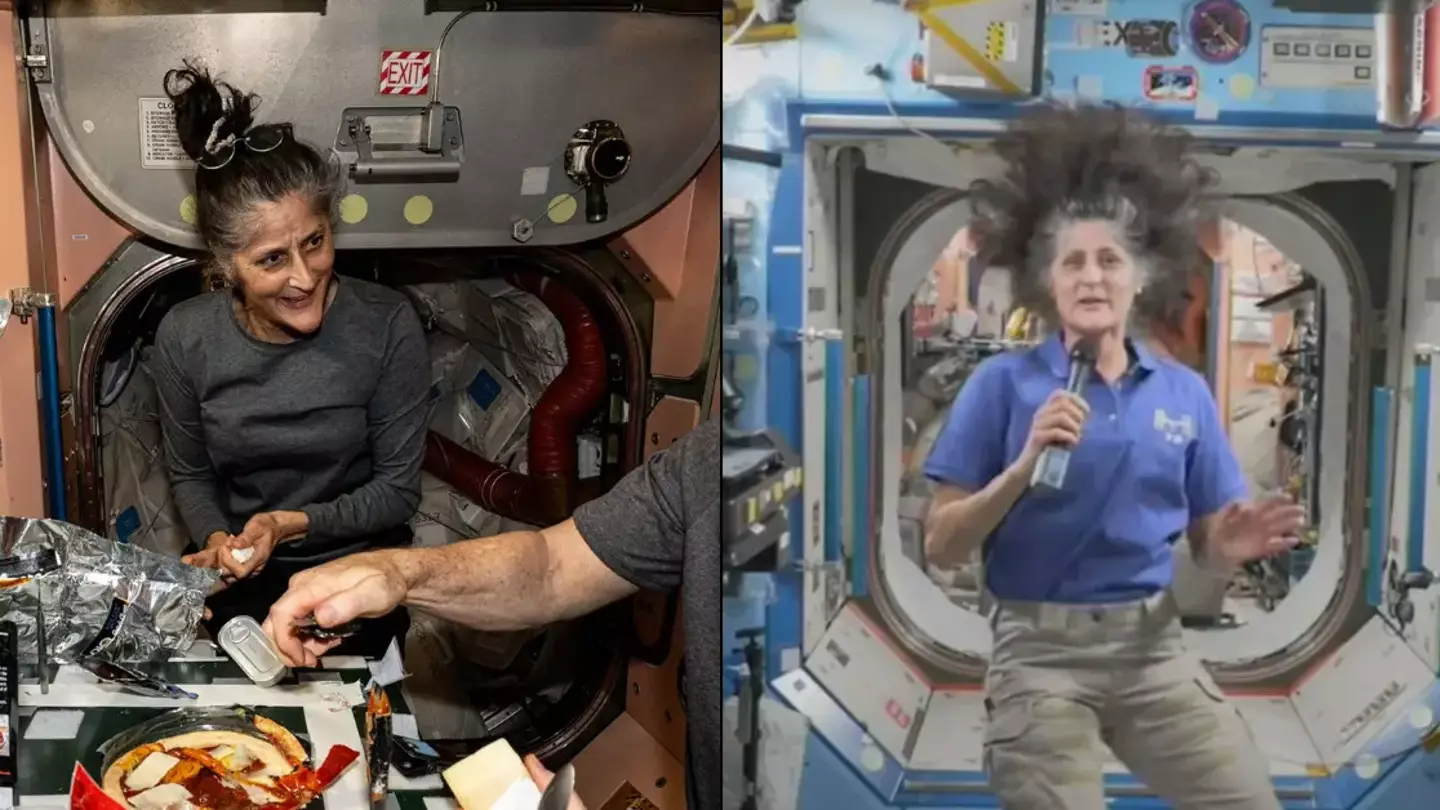
One of the NASA astronauts stranded in space has broken her silence after new photos sparked health concerns.
Sunita ‘Suni’ Williams, 59, and Barry ‘Butch’ Wilmore, 61, embarked on an eight-day mission back on 5 June. However, technical faults threw this off and instead of opting to fly home on the faulty spacecraft, the pair have been up there ever since.
They’re not totally stranded though, as they’ll be getting a ride home on SpaceX’s Dragon capsule when it’s their turn.
Us mere Earthlings have been getting updates on the NASA pair as people worry for them and that fear was amped up recently when new photos were released.
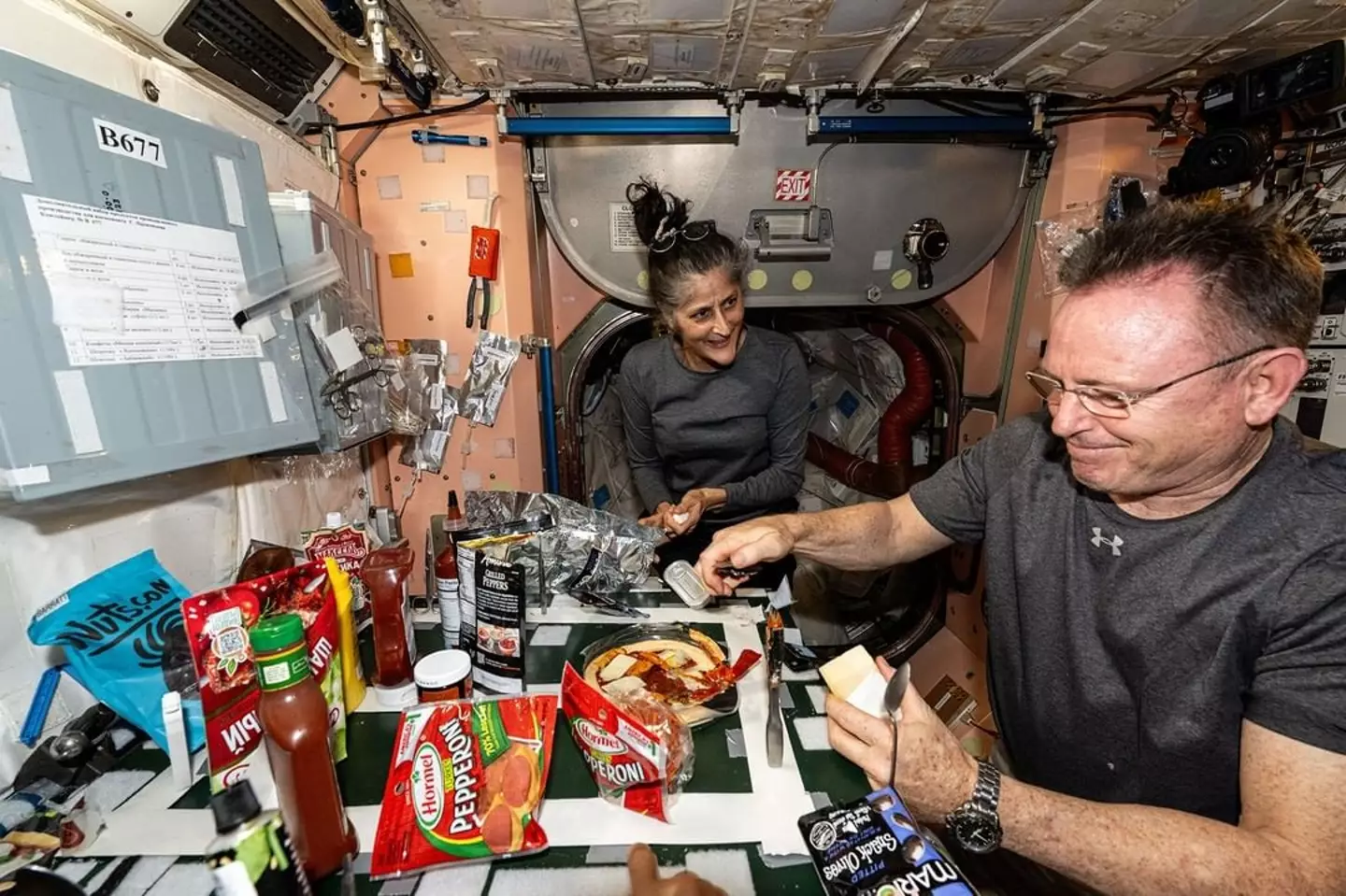
People began commenting on her body ‘changing’ (SWNS)
Some experts feared Williams had experienced some weight loss as they commented on her body.
Referencing the snaps, pulmonologist Dr Vinay Gupta told the Daily Mail: “I think what I can discern by her face and her cheeks being sunken in is that [she] has probably been at a significant [calorie] deficit for a while.
“Based on what I’m at least seeing in the photo, I don’t think she’s quite at a… place where I say her life’s in danger.
“But I don’t think you can look at that photo and say she has sort of healthy body weight.”
In a statement to LADbible, NASA said: “All NASA astronauts aboard the International Space Station undergo routine medical evaluations, have dedicated flight surgeons monitoring them, and are in good health.”
Williams has now had her say as NASA released a video of her talking to New England Sports Network yesterday (12 November).
Talking about fitness, sports, and life in space, the astronaut was asked if she has ‘lost any weight’ while she’s been trying to run various challenges up there or if her ‘overall health’ has changed.
“There’s a lot of changes that go on up here,” she said. “But it’s funny, I think there’s some rumours around out there that I’m losing weight and stuff.”
So, Williams took the chance to debunk all of this as she continued: “I’m actually right at the same amount.”
The astronaut explained that while they’re up there, they regularly weigh themselves and she is ‘at the same weight’ that she was when she first got there.
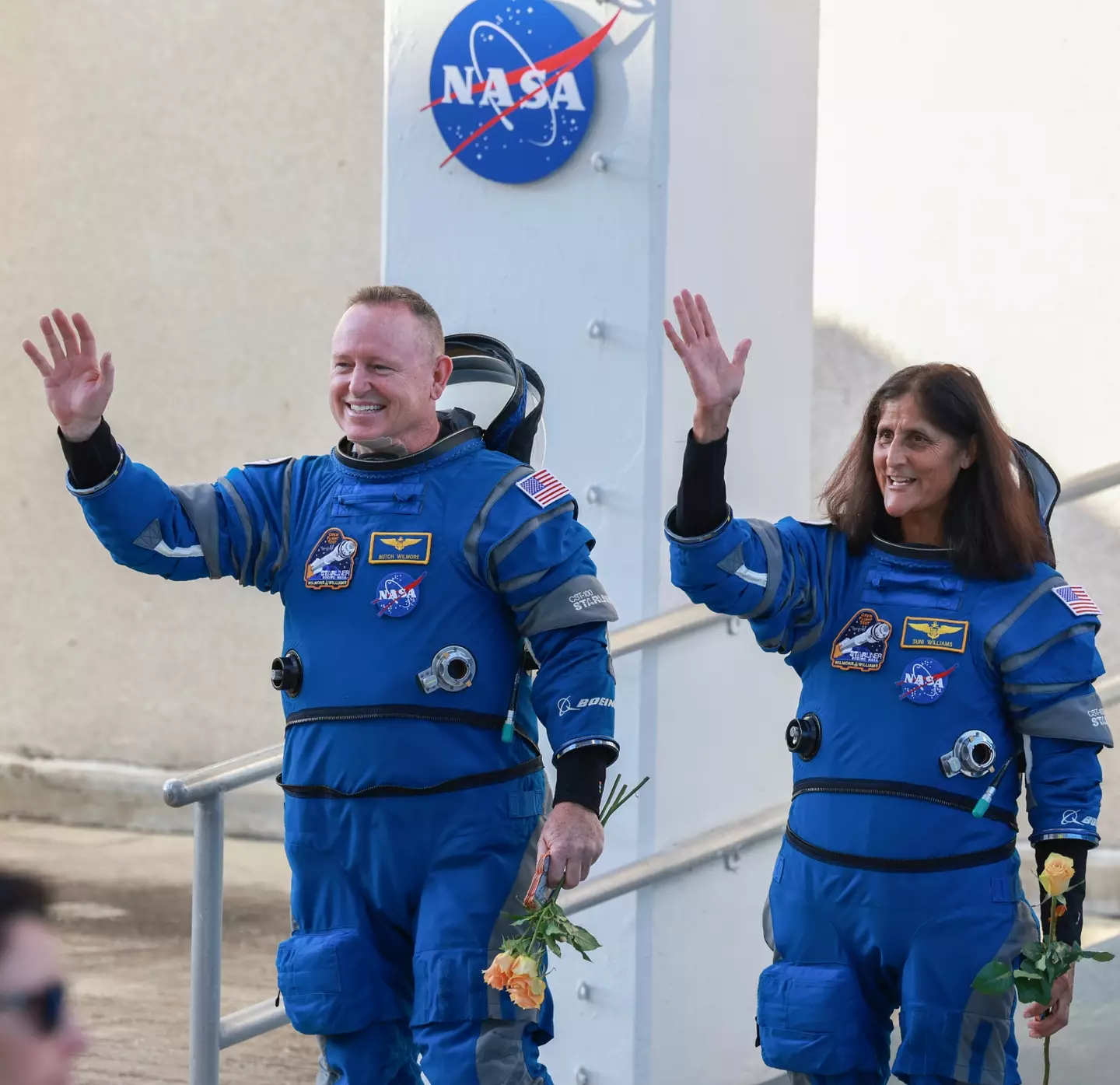
Suni and Butch left Earth in June (Joe Raedle/Getty Images)
“I think things shift around quite a bit. You’ve probably heard of a fluid shift, where folks in space, their heads look a little bigger because the fluid evens out along the body,” she explained.
“But Butch and I have been up here for a number of months, we’ve been on the workout gear. We’ve got a bike, we got a treadmill and we got weightlifting equipment.
“And I could definitely tell that weightlifting – which is not something I do all the time – has definitely changed me. My thighs are a little bigger, my but is a little bigger, we do a lot of squats.”
She explained that they use things like the treadmill because they’re working on their ‘bone density’ in their hips and in their feet.
“I think my body has changed a little bit but I weigh the same,” Williams clarified.
Featured Image Credit: NASA/SWNS
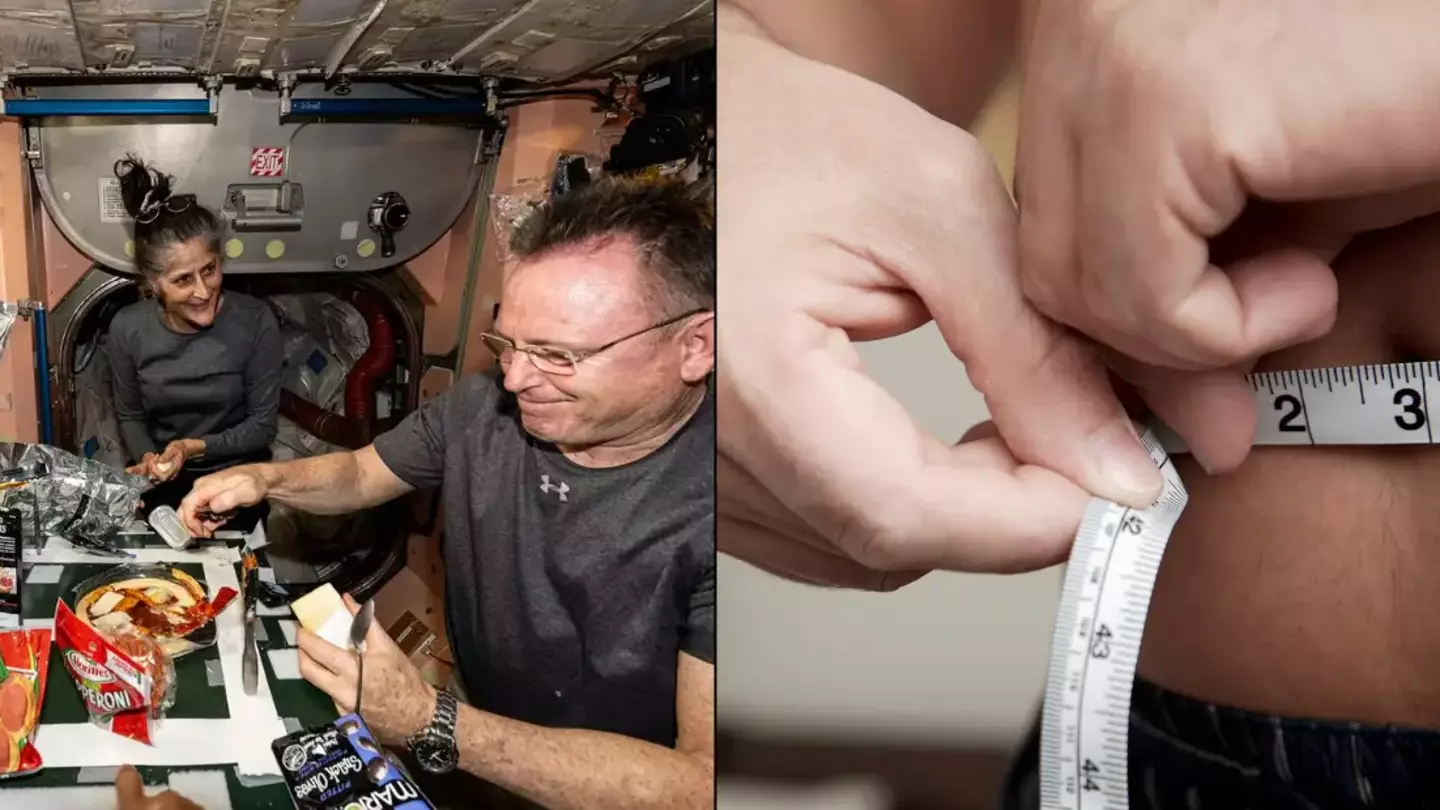
Everything that can happen to your body after a year in space has been revealed after health concerns rose over the astronauts that are stranded on the International Space Station (ISS).
The two astronauts set off on their journey to the ISS onboard Boeing’s Starliner on 5 June this year, on what was supposed to be an eight-day mission.
But five months later, the pair are still stranded, orbiting the Earth.
Americans Sunita ‘Suni’ Williams, 59, and Barry ‘Butch’ Wilmore, 61, have been stuck in space as their spacecraft was affected by technical faults, such as thruster failures and helium leaks.
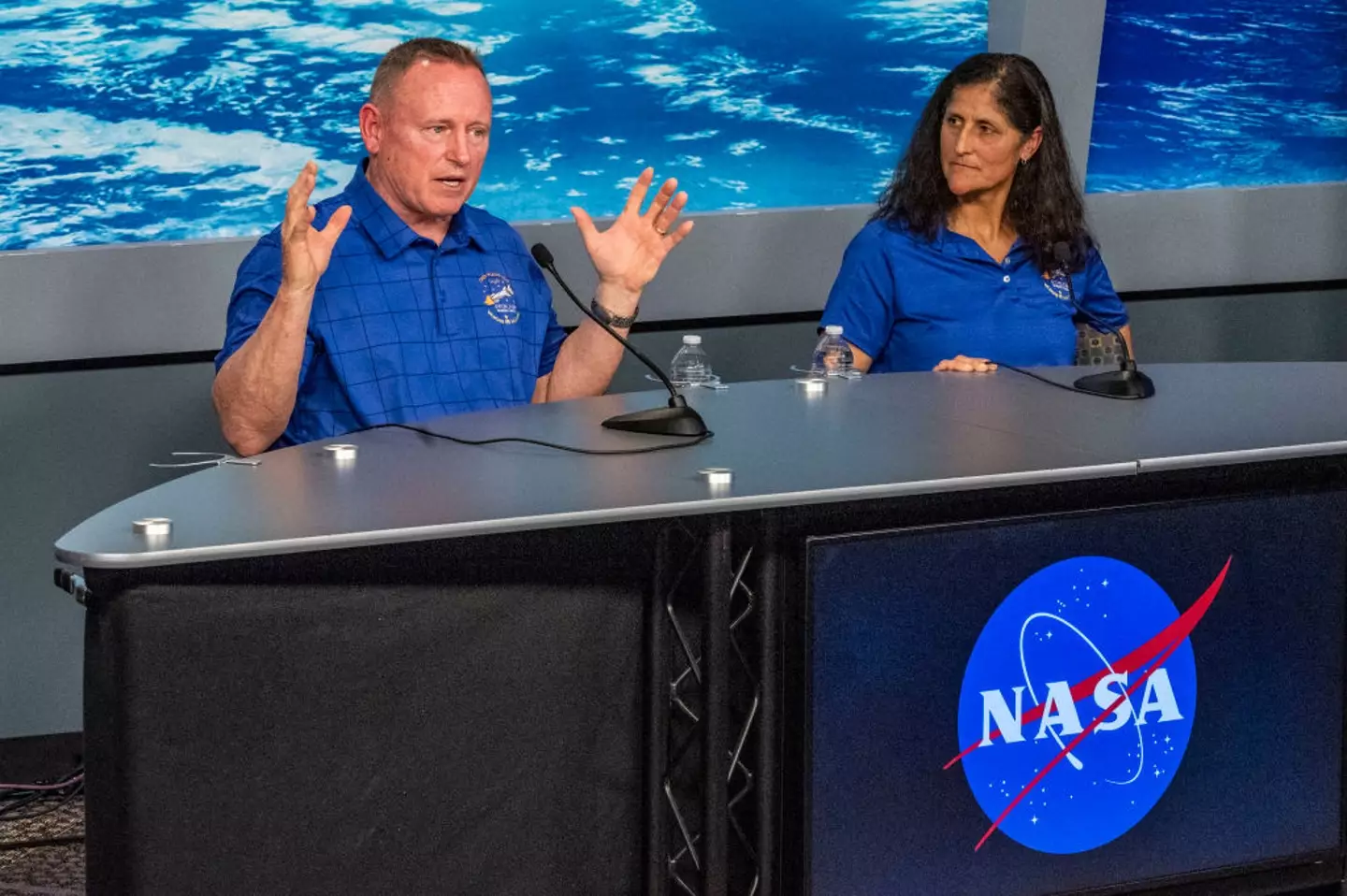
The astronauts have been stuck in space for months (Kirk Sides/Houston Chronicle via Getty Images)
But as two options faced them, that being either to fly home on a damaged spacecraft or wait for SpaceX’s Dragon capsule to collect them safely, the choice was obvious.
Unfortunately, the wait for the new capsule to arrive will be until February at the very least.
As new photos of the NASA-trained astronauts emerged this week, people started to get concerned for their health, particularly Williams, as pulmonologist Dr Vinay Gupta described her cheeks as ‘a bit sunken’ in an interview with the Daily Mail, as well as saying that her weight overall wasn’t ideal, due to the natural stresses of living at a very high altitude’.
But in a statement to LADbible, NASA said: “All NASA astronauts aboard the International Space Station undergo routine medical evaluations, have dedicated flight surgeons monitoring them, and are in good health.”
Regardless though, what exactly happens to your body after a prolonged period of time in space?

Williams is on the left, and has evoked health concerns from the public (Instagram/@iss)
Frank Rubio returned to Earth in September 2023 after 371 days in space, as the NASA astronaut set a record for the single longest spaceflight by an American, falling two months short of the world record, held by a Russian cosmonaut.
His body underwent a number of changes, some seen before with other astronauts that were in orbit for long periods of time.
Without further ado, this is what your body can undergo after a long period of time in space:
Weight loss
NASA does its best to make sure astronauts are eating nutritiously while they’re up in space, but being up there can still affect their bodies.
When astronaut Scott Kelly took part in a study of the effects, he lost seven percent of his body mass after staying onboard the ISS for 340 days.
Muscles and bones
Pretty similarly, as laid out by the BBC, after just two weeks in space, muscle mass can fall by as much as 20 percent.
Plus, for every month they spend up there, astronauts can lose one to two percent of their bone mass and up to 10 percent over a six-month period.
So, to try and combat this, they do two-and-a-half exercise and intense training each day on the ISS as well as taking diet supplements.
Plus, the lack of gravity actually means astronauts often end up growing a little taller, with Rubio himself saying he thought his ‘spine has extended’.
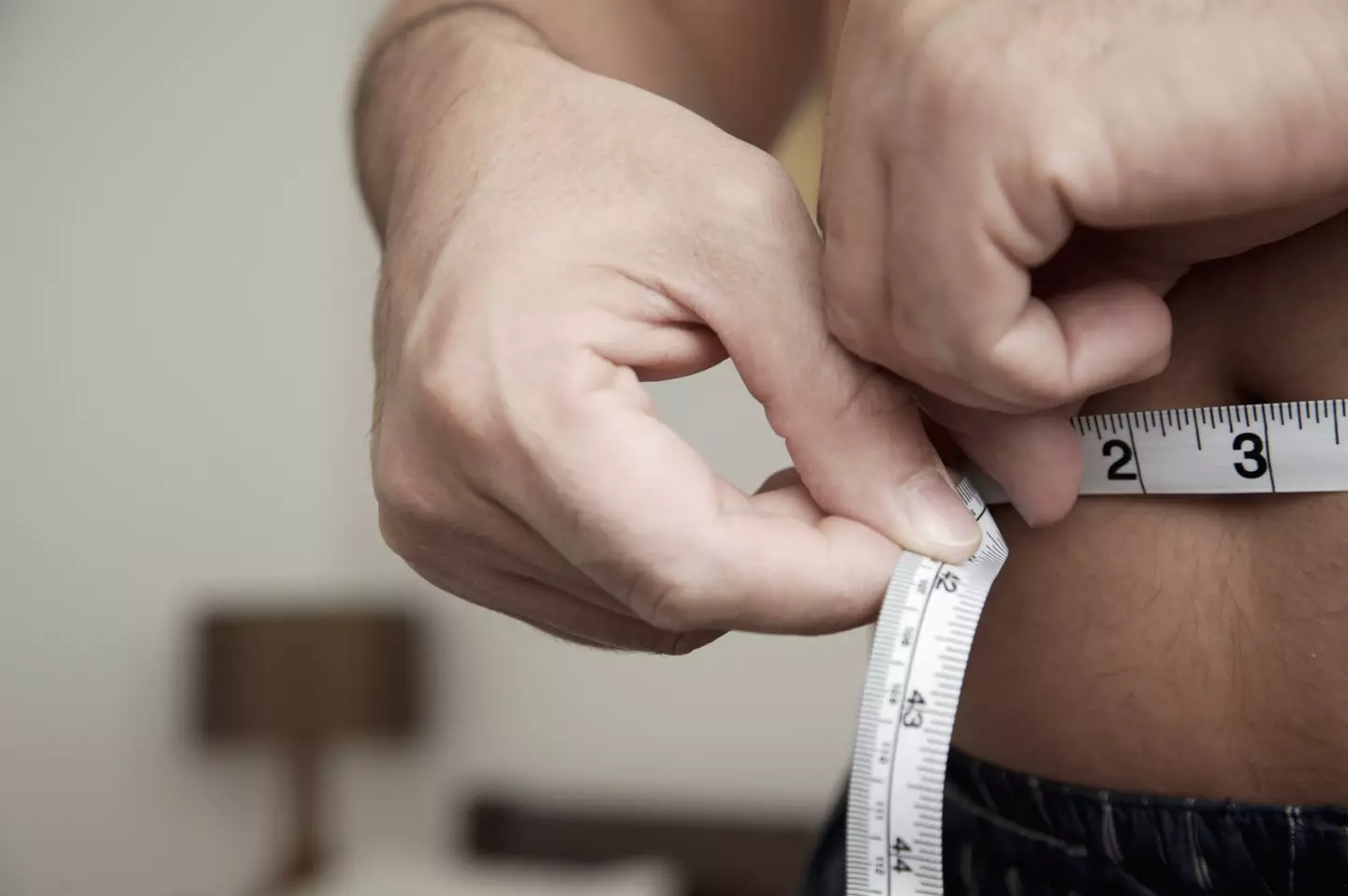
Weight loss is a side-effect of being in space for a long period of time (Getty Stock Photo)
Eyesight
While you’re in space, more blood can get into the head than normal thanks to the lack of gravity. And sometimes, some of it can pool at the back of the eye, leading to changes in eyesight.
Usually, the vision changes reverse for astronauts within roughly a year of being back on Earth, but for others they can be permanent.
Plus, the galactic cosmic rays and energetic solar particles can affect the eyes with some astronauts reporting seeing flashes of lights in their eyes.
Skin
In the study with Kelly, his skin was found to have heightened sensitivity and a rash for about six days after getting back on this planet.
Friendly bacteria
We all know by now that to have a good level of health, we need a good makeup and diversity of microorganisms living in our bodies.
The study with Kelly found that the bacteria in his gut had altered profoundly compared to before he left Earth. I mean, it’s not totally surprising giving the change in food.
However, being exposed to radiation, drinking recycled water and changing activity probably played a role too.
Featured Image Credit: Getty Stock Photo/Instagram/@iss
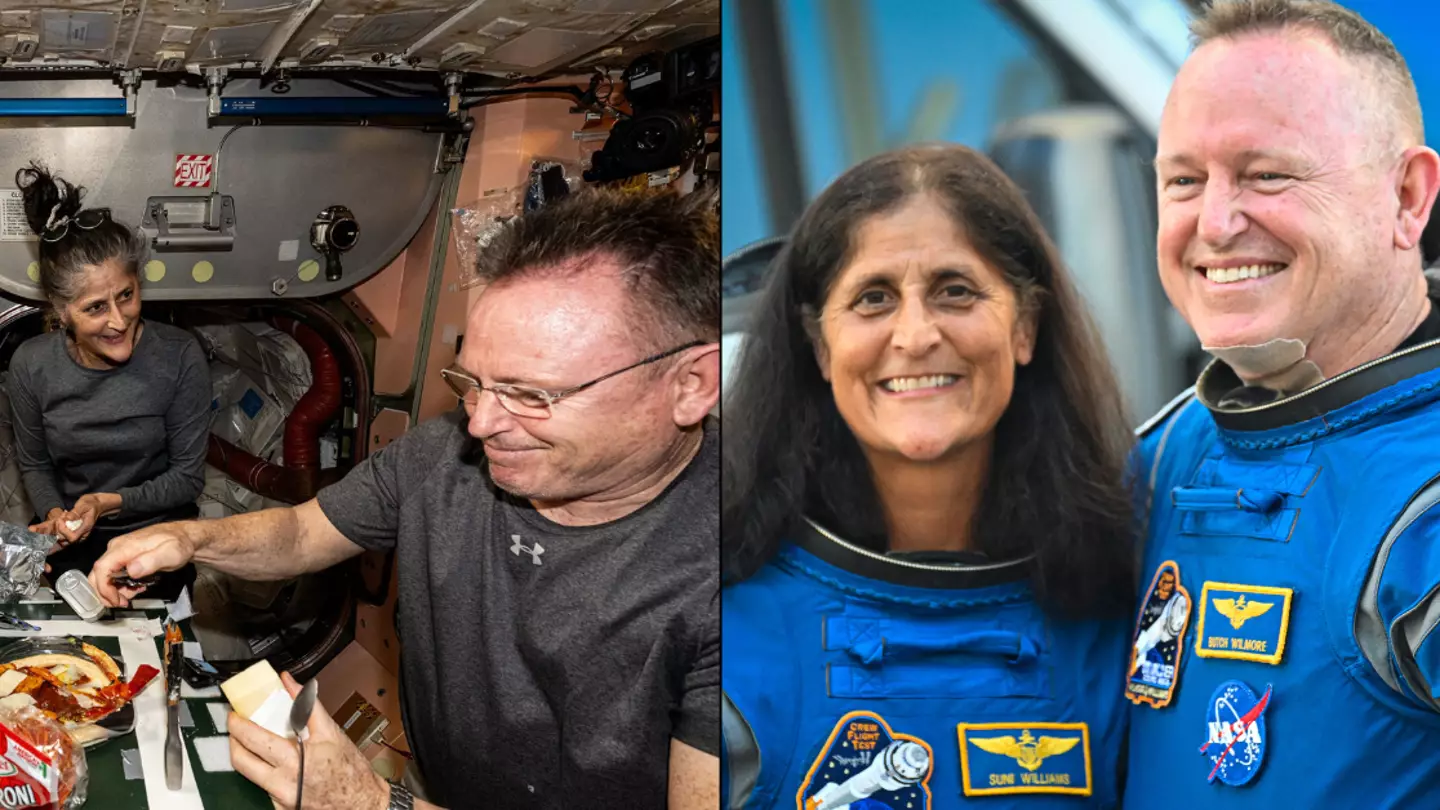
New photographs have been released of the astronauts who have spent over 150 days stranded on the International Space Station (ISS) and have sparked fears around their health.
Sunita ‘Suni’ Williams, 59, and Barry ‘Butch’ Wilmore, 61, embarked on their trip to the ISS onboard the Boeing’s Starliner on 5 June for what was intended to be an eight-day mission.
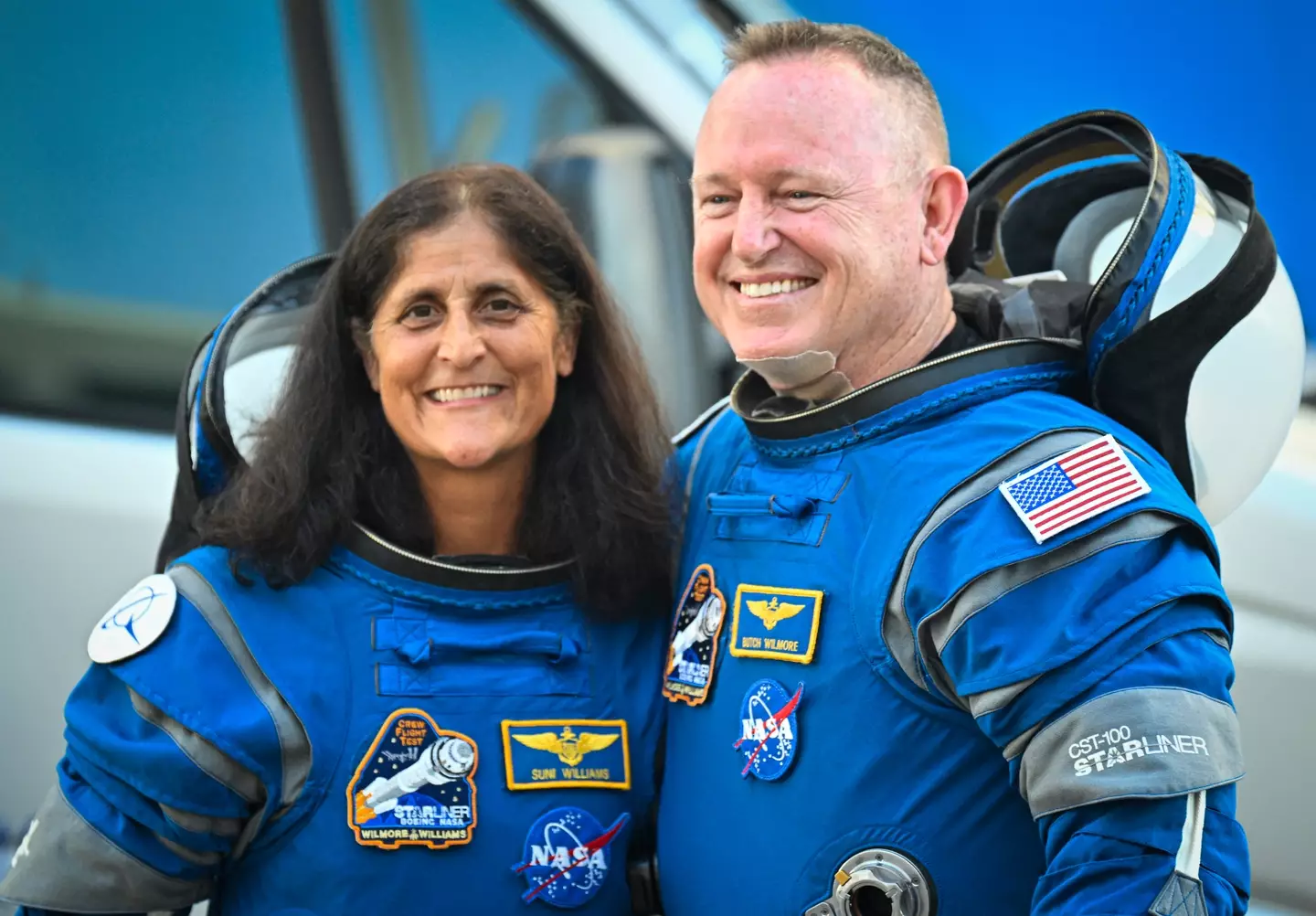
Astronauts Sunita ‘Suni’ Williams and Barry ‘Butch’ Wilmore (AFP via Getty Images)
Their spacecraft was hit with technical faults however, including thruster failures and helium leaks.
They were then faced with two options – fly home on the faulty spacecraft or wait for SpaceX’s Dragon capsule to come pick them up.
Williams and Wilmore took the second option and have been up in space ever since.
In newly released pictures of the pair though, Williams’ appearance has caused concerns over her health.
Speaking about the photos, pulmonologist Dr Vinay Gupta told the Daily Mail: “What you’re seeing there in that picture is somebody that I think is experiencing the natural stresses of living at a very high altitude, even in a pressurised cabin, for extended periods.
“Her cheeks appear a bit sunken – and usually it happens when you’ve had sort of total body weight loss.
“I think what I can discern by her face and her cheeks being sunken in is that [she] has probably been at a significant [calorie] deficit for a while.
“Based on what I’m at least seeing in the photo, I don’t think she’s quite at a… place where I say her life’s in danger.
“But I don’t think you can look at that photo and say she has sort of healthy body weight.”
Williams and Wilmore are set to return to Earth in February of 2025 as part of the SpaceX Crew-9 mission.
Earlier this year, NASA Administrator Bill Nelson said: “NASA has decided that Butch and Suni will return with [SpaceX’s] Crew-9 next February, and that Starliner will return uncrewed
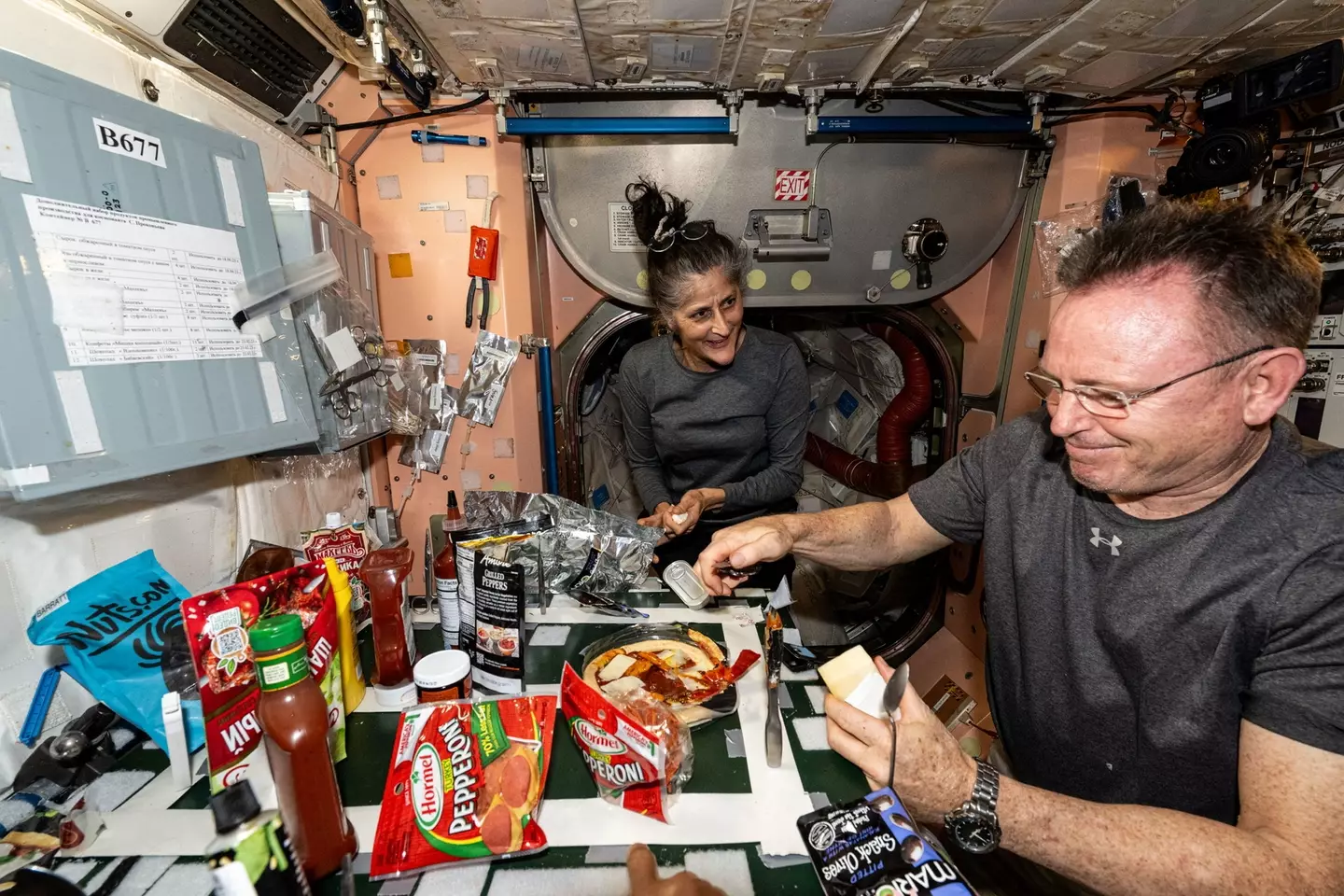
Williams is on the left, and has sparked health concerns (SWNS)
“I want you to know that Boeing has worked very hard with Nasa to get the necessary data to make this decision.
“We want to further understand the root causes and understand the design improvements so that the Boeing Starliner will serve as an important part of our assured crew access to the ISS.”
Wilmore previously said that despite the issues with the spacecraft, he feels ‘very fortunate’ to be on the ISS.
As per The Independent, the astronaut said: “Obviously, when you have issues like we’ve had, there’s some changes that need to be made. Boeing’s on board with that. We’re all on board with that.
“Starliner’s crewed test flight was meant to push the edge of the envelope.
“And when you do things with spacecraft that have never been done before, just like Starliner, you’re going to find some things. In this case, we found some things that we just could not get comfortable with putting us back in the Starliner.”
He added: “There’s many cases in the past where there have not been other options.
“We were very fortunate that we have the Space Station and that we had the option to stay and we had the option to come back a different way.”
In a statement to LADbible, NASA said: “All NASA astronauts aboard the International Space Station undergo routine medical evaluations, have dedicated flight surgeons monitoring them, and are in good health.”
Featured Image Credit: SWNS/MIGUEL J. RODRIGUEZ CARRILLO/AFP via Getty Images
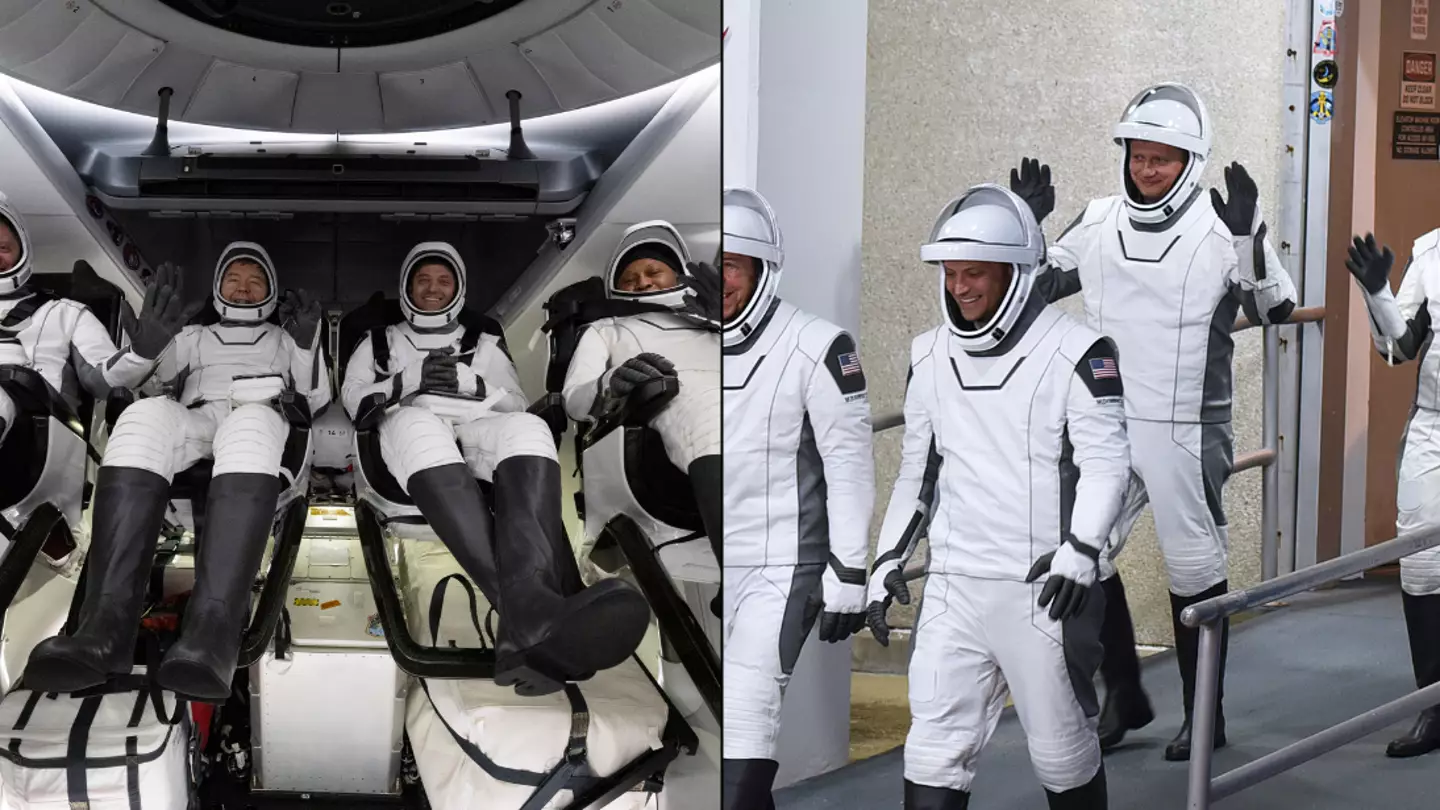
A crew of four NASA astronauts were sent to hospital on their return from space and we don’t fully know why.
The group were brought back down to Earth on SpaceX’s Dragon capsule on 25 October after spending more than 200 days on the International Space Station (ISS).
After a successful landing down near Pensacola, Florida, however, a NASA astronaut ‘experienced a medical issue’, the space agency said.
It was then announced that NASA astronauts Matthew Dominick, Michael Barratt, and Jeanette Epps, and Roscosmos cosmonaut Alexander Grebenkin were taken to the Ascension Sacred Heart Pensacola in Florida.
Three of the crew members left the hospital and arrived at NASA’s Johnson Space Center in Houston, while the ‘one astronaut who remained at Ascension was in stable condition under observation as a precautionary measure’.
Thankfully, the astronaut involved was released after a night in hospital.
“To protect the crew member’s medical privacy, specific details on the individual’s condition or identity will not be shared,” NASA added.
“During its return to earth, the SpaceX Dragon executed a normal entry and splashdown.
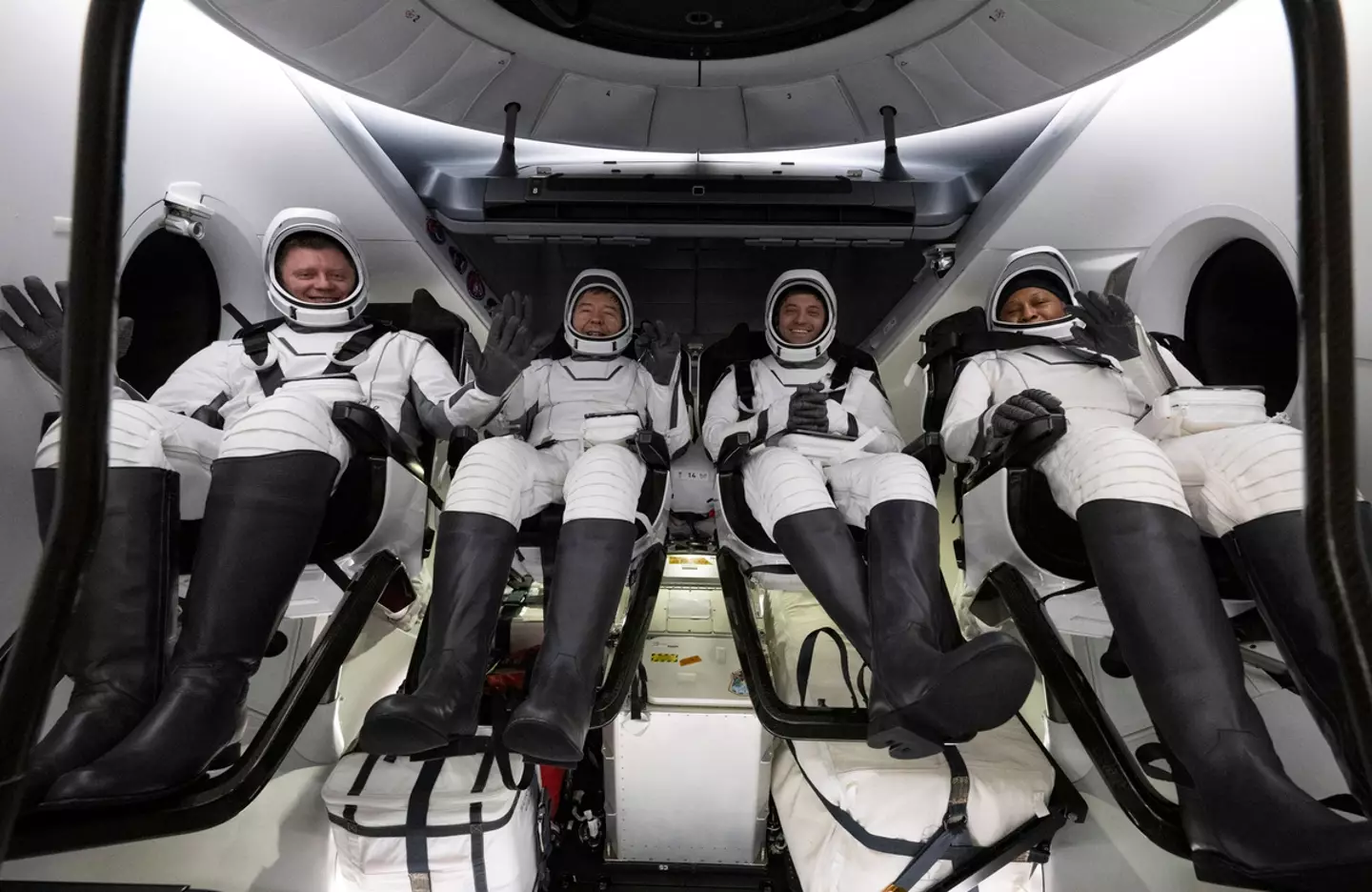
Four NASA astronauts were rushed to hospital on their return to Earth (Joel Kowsky/NASA via Getty Images)
“Recovery of the crew and the spacecraft was without incident.
“During routine medical assessments on the recovery ship, the additional evaluation of the crew members was requested out of an abundance of caution.”
In a post-splashdown news conference, NASA provided little update on the situation, saying the hospital visits were done ‘out of an abundance of caution’.
It didn’t specify any details in regard to the health concerns.
This comes after NASA astronauts on board the ISS were being issued safety precautions because of 50 ‘areas of concern’.
The US space agency and its Russian counterpart Roscosmos say they have been aware of a leak on the ISS since 2019.
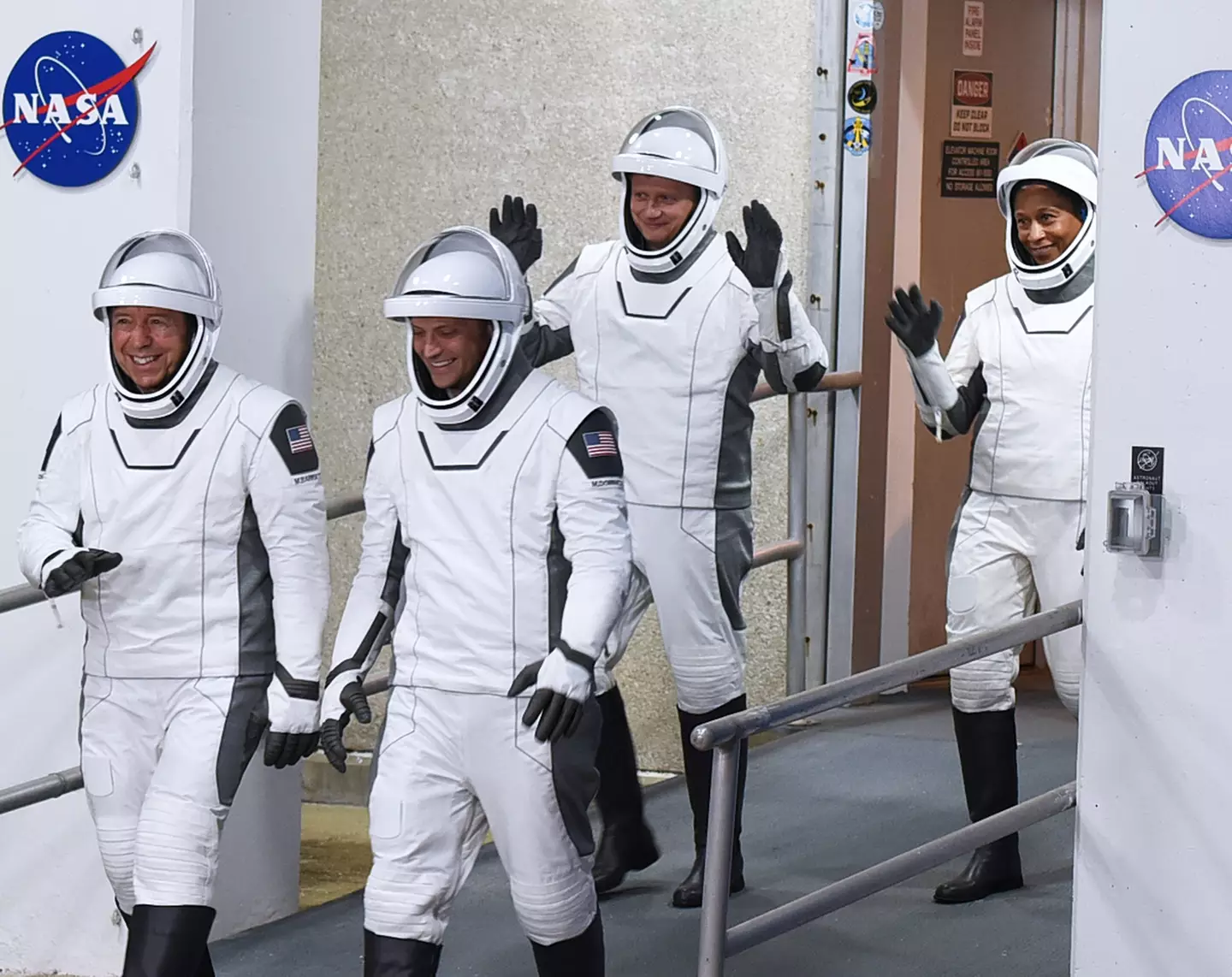
The group were brought back down to earth on SpaceX’s Dragon capsule on 25 October after spending more than 200 days on the ISS (Paul Hennessy/Anadolu via Getty Images)
But following various safety concerns, they have been taking a look at four cracks and 50 other ‘areas of concern’ on board.
NASA has since told the Washington Post that Roscosmos has used ‘a combination of sealant and patches’ to cover up the cracks, with internal risk assessments scoring it a five out of five.
“We have conveyed the seriousness of the leaks multiple times, including when I was in Russia earlier this year,” NASA associate administrator, Jim Free, told the outlet.
In the short-term, they’ve recommended to astronauts to keep the hatch closed as much as possible ‘in the evening’.
Though when the hatch is open, NASA’s space experts have been instructed to remain on the US side of the space station in the case of an emergency.
They remain adamant that the ISS is still safe enough for the remaining 11 people onboard.
LADbible Group has contacted NASA for comment.
Featured Image Credit: Joel Kowsky/NASA via Getty Images/Paul Hennessy/Anadolu via Getty Images
.png)
On 27 September 2023, Frank Rubio returned to Earth after a whopping 371 days in space.
The NASA astronaut set a new record by achieving the longest single spaceflight by an American – just two months short of the longest ever spaceflight by a human achieved by a Russian cosmonaut in the 90s with 437 days.
Now, it doesn’t take a genius to work out that spending over a year orbiting the Earth will take a bit of a toll on the body. And when Rubio landed back on our planet last year, he had to be lifted and carried from the capsule by the recovery teams.
I mean, the bloke had been in the low-gravity environment of the International Space Station (ISS) for a real hot minute. So, it’s fair to say there’s quite a lot that happens to an astronaut’s body physically when they return to Earth.
.jpg)
His body’s been through it. (Bill Ingalls/NASA via Getty Images)
Weight loss
Of course, NASA does its best to make sure astronauts are eating nutritiously while they’re up in space. But being up there can still affect their bodies.
When astronaut Scott Kelly took part in a study of the effects, after staying onboard the ISS for 340 days, he lost seven percent of his body mass.
Muscles and bones
Pretty similarly, as laid out by the BBC, after just two weeks in space, muscle mass can fall by as much as 20 percent.
Plus, for every month they spend up there, astronauts can lose one to two percent of their bone mass and up to 10 percent over a six-month period.
So, to try and combat this, they do two-and-a-half exercise and intense training each day on the ISS as well as taking diet supplements.
Plus, the lack of gravity actually means astronauts often end up growing a little taller, with Rubio himself saying he thought his ‘spine has extended’.
.jpg)
The bloke spent over a year up there. (APHOTOGRAFIA/Getty Images)
Eyesight
While you’re in space, more blood can get into the head than normal thanks to the lack of gravity. And sometimes, some of it can pool at the back of the eye, leading to changes in eyesight.
Usually, the vision changes reverse for astronauts within roughly a year of being back on Earth but for others, they can be permanent.
Plus, the galactic cosmic rays and energetic solar particles can affect the eyes with some astronauts reporting seeing flashes of lights in their eyes.
Skin
In the study with Kelly, his skin was found to have heightened sensitivity and a rash for about six days after getting back on this planet.
Friendly bacteria
We all know by now that to have a good level of health, we need a good makeup and diversity of microorganisms living in our bodies.
The study with Kelly found that the bacteria in his gut had altered profoundly compared to before he left Earth. I mean, it’s not totally surprising giving the change in food.
However, being exposed to radiation, drinking recycled water and changing activity probably played a role too.


